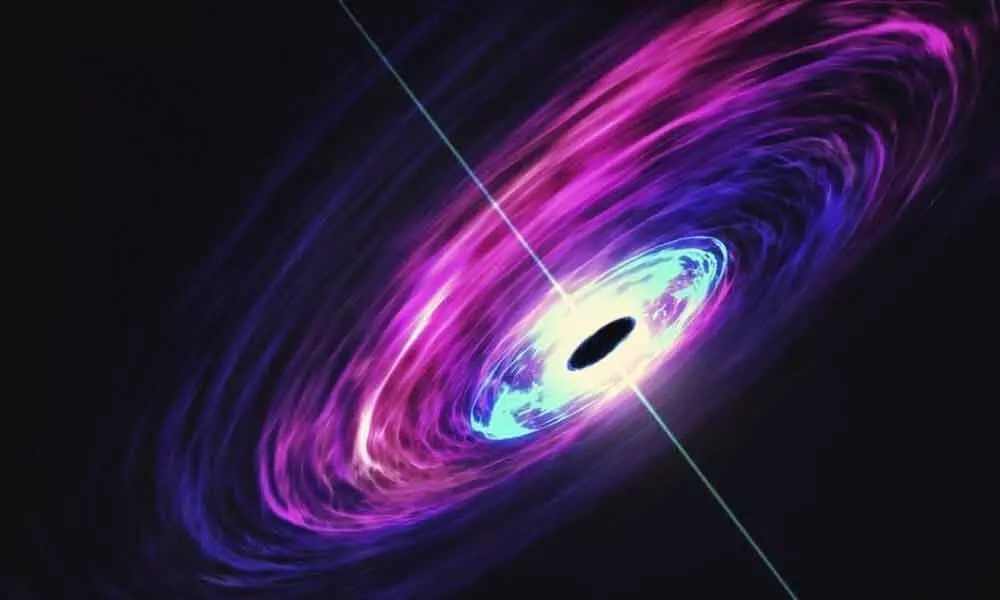Live
- Cops silence deafening noise of 100 bikes
- Guv inaugurates medical screening camp for Raj Bhavan staff
- Job fair for pharmacist roles tomorrow
- New ration cards to be issued in January
- Job mela at Masab Tank tomorrow
- New toilets facilitated for MPP school students
- Steps to safeguard natural springs gain momentum
- RWAs want officials to clear fog over SCB-GHMC merger
- Tanks, canals remain neglected despite execution of MGNREGS works
- BRS to celebrate Deeksha Diwas on Nov 29, Dec 9
Just In
Chinese team spots monster black hole 70 times bigger than Sun


A team led by Chinese researchers has spotted a monster black hole with a mass 70 times greater than Sun -- toppling the earlier assumption that the mass of an individual black hole in our Galaxy is no more than 20 times that of Sun.
Beijing : A team led by Chinese researchers has spotted a monster black hole with a mass 70 times greater than Sun -- toppling the earlier assumption that the mass of an individual black hole in our Galaxy is no more than 20 times that of Sun.
Our Milky Way Galaxy is estimated to contain 100 million stellar black holes -- cosmic bodies formed by the collapse of massive stars and so dense even light can't escape.
The team, headed by Professor LIU Jifeng of the National Astronomical Observatory of China of the Chinese Academy of Sciences (NAOC), spotted a stellar black hole with a mass 70 times greater than the Sun.
The monster black hole is located 15 thousand light-years from Earth and has been named "LB-1" by the researchers in a paper reported in the journal Nature.
"Black holes of such mass should not even exist in our Galaxy, according to most of the current models of stellar evolution," said LIU.
"We thought that very massive stars with the chemical composition typical of our Galaxy must shed most of their gas in powerful stellar winds, as they approach the end of their life. Therefore, they should not leave behind such a massive remnant," he explained.
Until just a few years ago, stellar black holes could only be discovered when they gobbled up gas from a companion star.
The vast majority of stellar black holes in our Galaxy are not engaged in a cosmic banquet, though, and thus don't emit revealing X-rays.
As a result, only about two dozen Galactic stellar black holes have been well identified and measured.
To counter this limitation, LIU and collaborators surveyed the sky with China's Large Sky Area Multi-Object Fiber Spectroscopic Telescope (LAMOST).
After the initial discovery, the world's largest optical telescopes - Spain's 10.4-m Gran Telescopio Canarias and the 10-m Keck I telescope in the US - were used to determine the system's physical parameters.
The results were nothing short of fantastic: a star eight times heavier than the Sun was seen orbiting a 70-solar-mass black hole, every 79 days.
The direct sighting of LB-1 proves that this population of over-massive stellar black holes exists even in our own backyard.
"This discovery forces us to re-examine our models of how stellar-mass black holes form," said LIGO Director Professor David Reitze from University of Florida in the US.

© 2024 Hyderabad Media House Limited/The Hans India. All rights reserved. Powered by hocalwire.com






